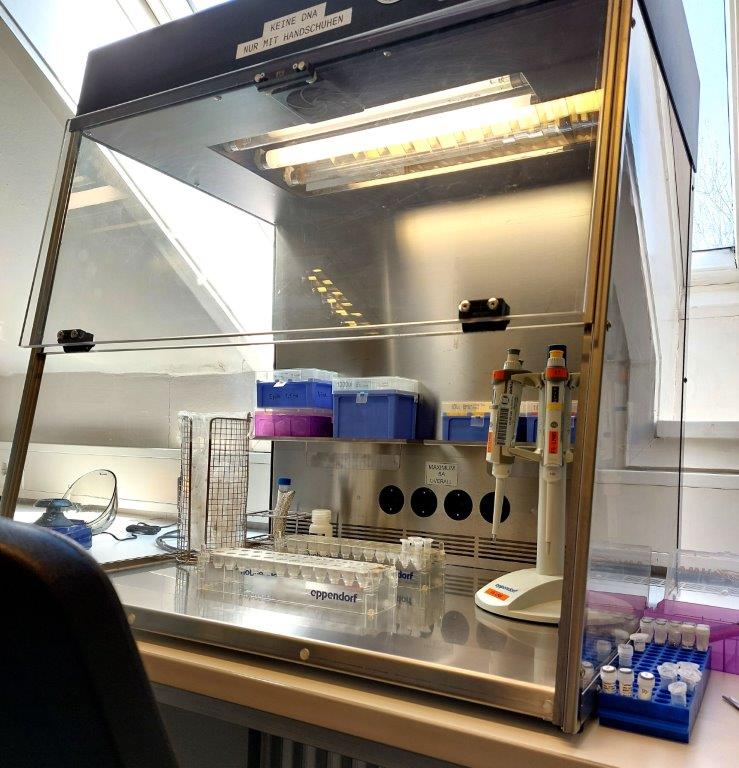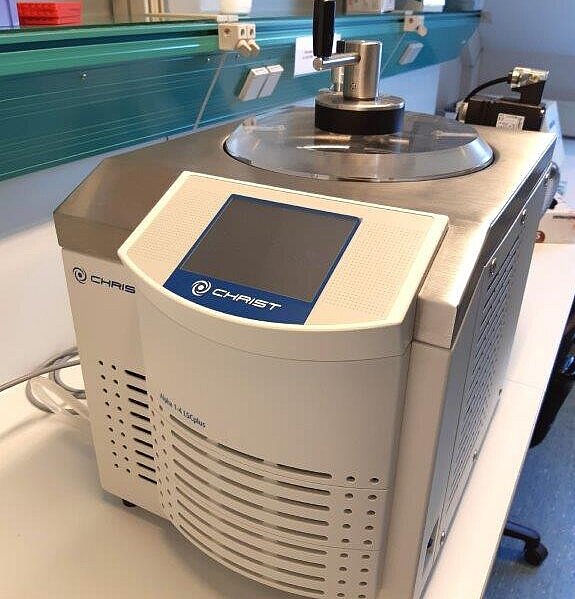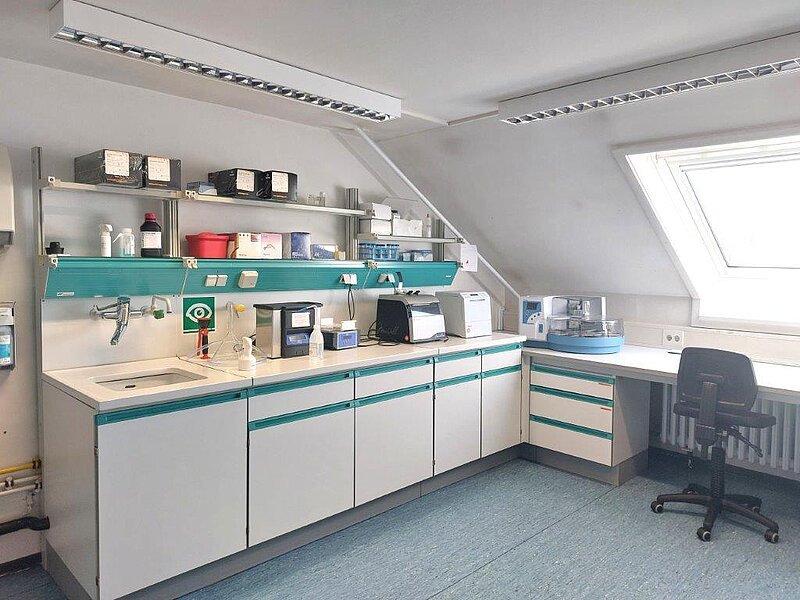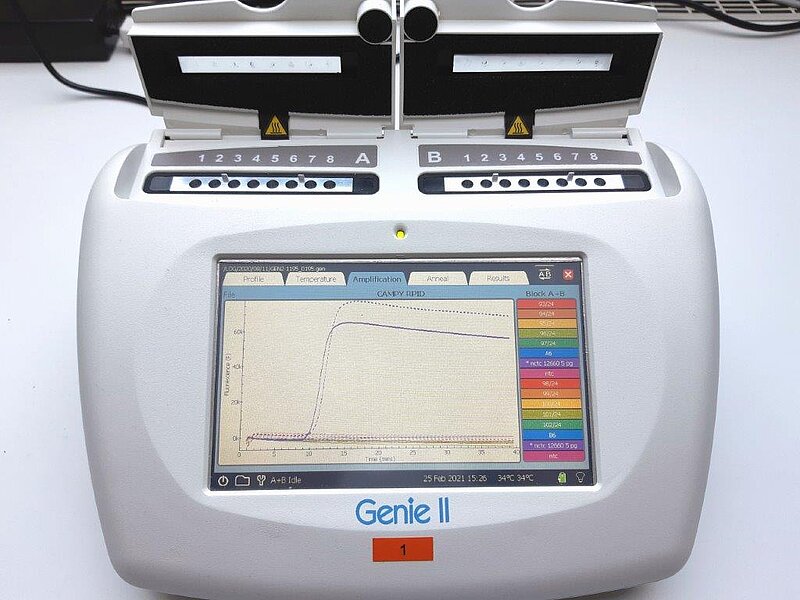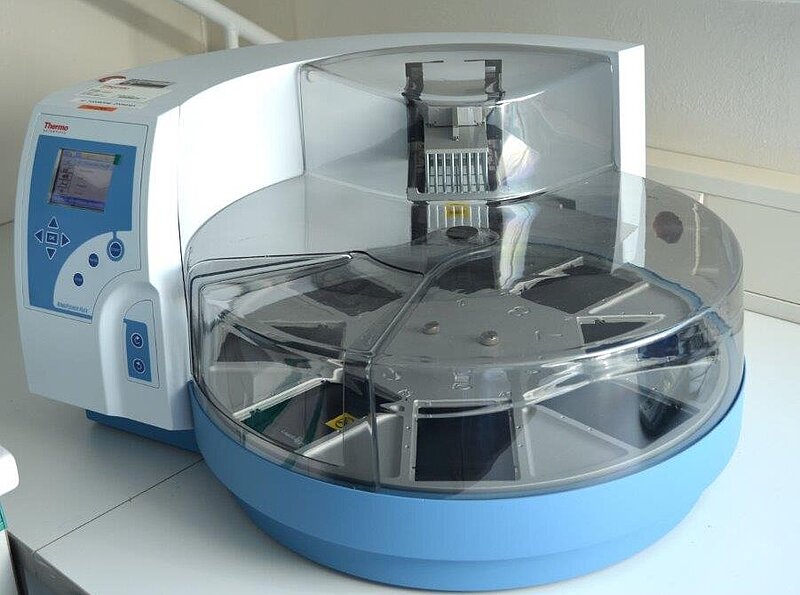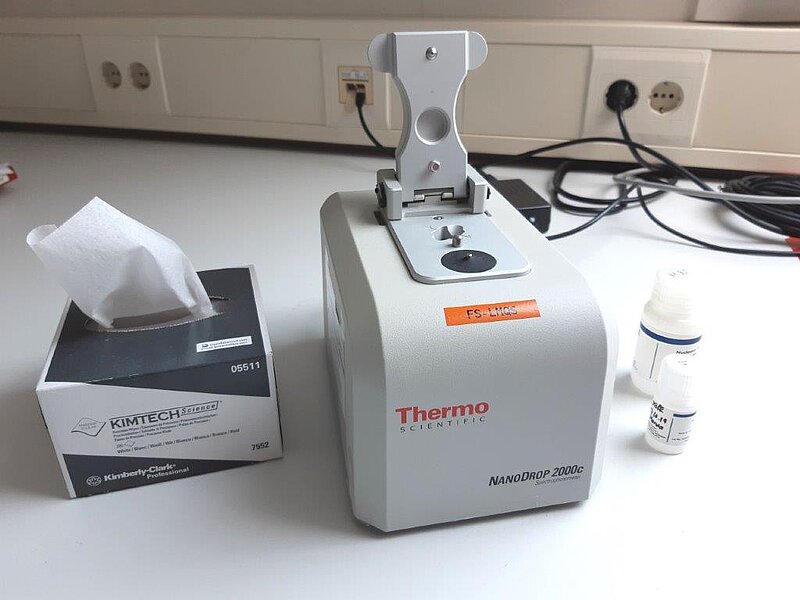The department Foodborne Zoonoses is mainly concerned with the development and validation of methods for the detection of relevant zoonotic pathogens associated with food of animal origin. In the past, foodborne disease outbreaks have repeatedly occurred, for example, due to the consumption of products contaminated with Listeria monocytogenes, Salmonella or Campylobacter spp. The goal of preventive consumer protection can only be achieved if early detection of microbial hazards is feasible. For this reason, the Foodborne Zoonoses Department is increasingly involved in the development rapid methods that ideally allow direct identification of pathogens in field diagnostics.
With regard to rapid pathogen detection, molecular diagnostics offer promising approaches. Methods such as the polymerase chain reaction (PCR) or the loop-mediated isothermal amplification (LAMP) method are able to detect pathogens on the basis of specific DNA amplification, providing high analytical specificity and sensitivity. In most cases, the use of these techniques eliminates the need for labor-intensive and time-consuming cultivation and isolation of pathogens. In particular, the LAMP method can be implemented with minimal equipment requirements due to the isothermal reaction conditions (constant reaction temperature). Therefore, it is also suitable for application under restricted on-site conditions.
Short-ripened raw sausages are high-risk foods and can be a source of infection with Salmonella and Listeria monocytogenes.
Impressions from the lab / equipment overview
equipment overview
- LightCycler®96 (Roche Diagnostics International Ltd)
- Real-time PCR
- 4-channel measurement (multiplex detection)
- Melting curve analysis
- Sample throughput: 96 per application
- Genie® II (OptiGene Ltd)
- Real-time LAMP fluorometer
- 1-channel measurement (singleplex detection)
- Melting curve analysis
- Genie® III (OptiGene Ltd)
- Real-time LAMP fluorometer
- 2-channel measurement (multiplex detection)
- Melting curve analysis
- ESEQuant TS2 (Qiagen)
- Real-time LAMP fluorometer
- 6-channel measurement (multiplex detection)
- Melting curve analysis
- NanoDrop 2000C (Thermo Scientific)
- UV-Vis spectrophotometer
- Quantification of DNA, RNA and proteins
- OD measurement (microbial growth kinetics)
- Purity analyses
- KingFisher Flex (ThermoFisher Sientific)
- Automatized extraction of DNA, RNA, proteins and cells
- Sample throughput: 96 per application
- Maxwell® RSC Instrument (Promega) incl. Quantus™ Fluorometer
- Automatized extraction of DNA and RNA
- Integrated DNA/RNA quantification
- Precellys Evolution (Bertin Instruments)
- Grinding and lysis of biological samples
- Homogenization of challenging samples like bacterial spores, bones, hair etc.
- Fast extraction of DNA, RNA and proteins
- Lyophilizer Alpha 1-4 LSCplus (Christ)
- Freeze-drying equipment for the production of lyophilisates



